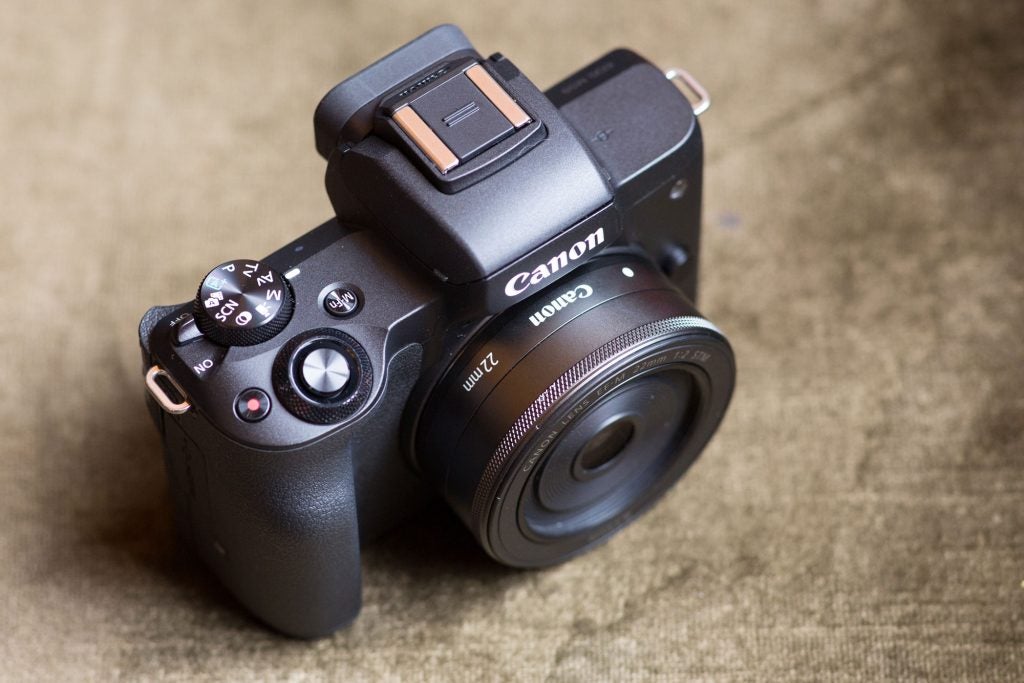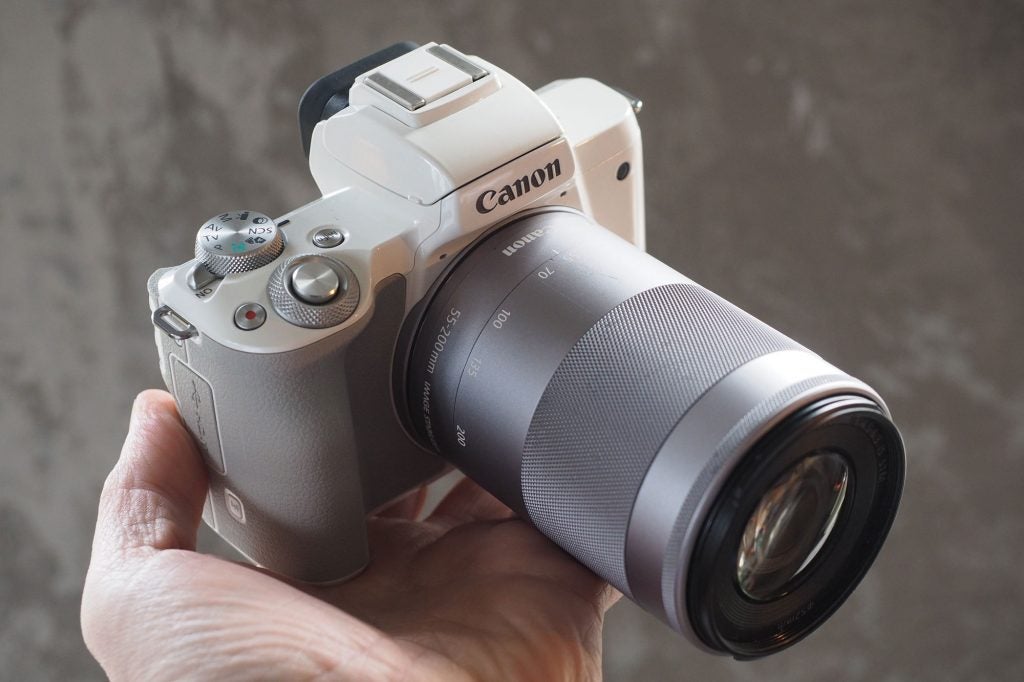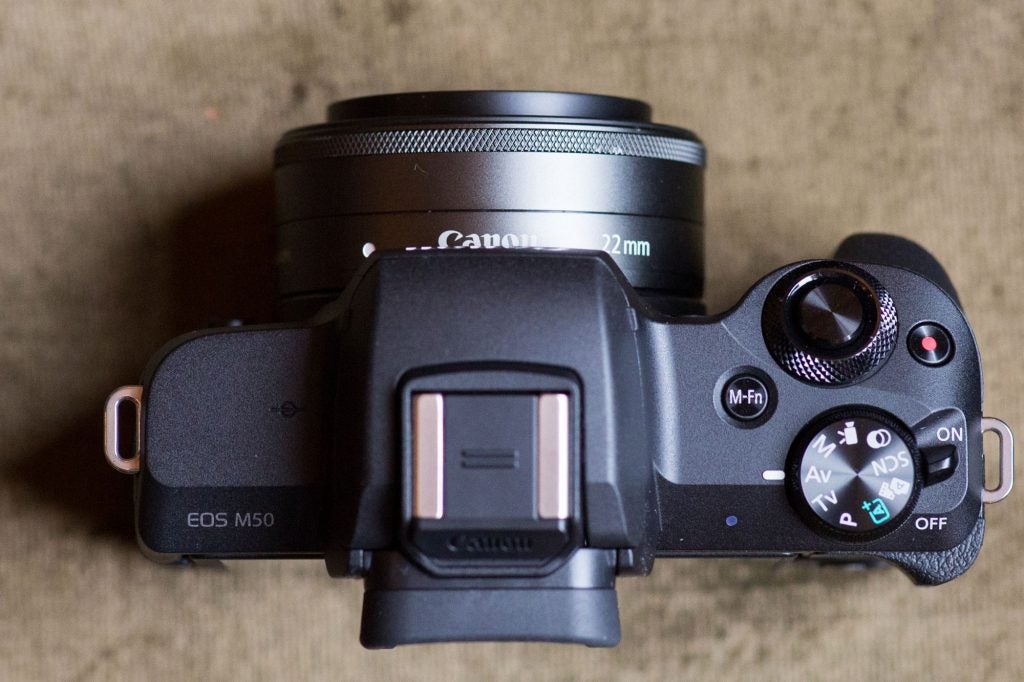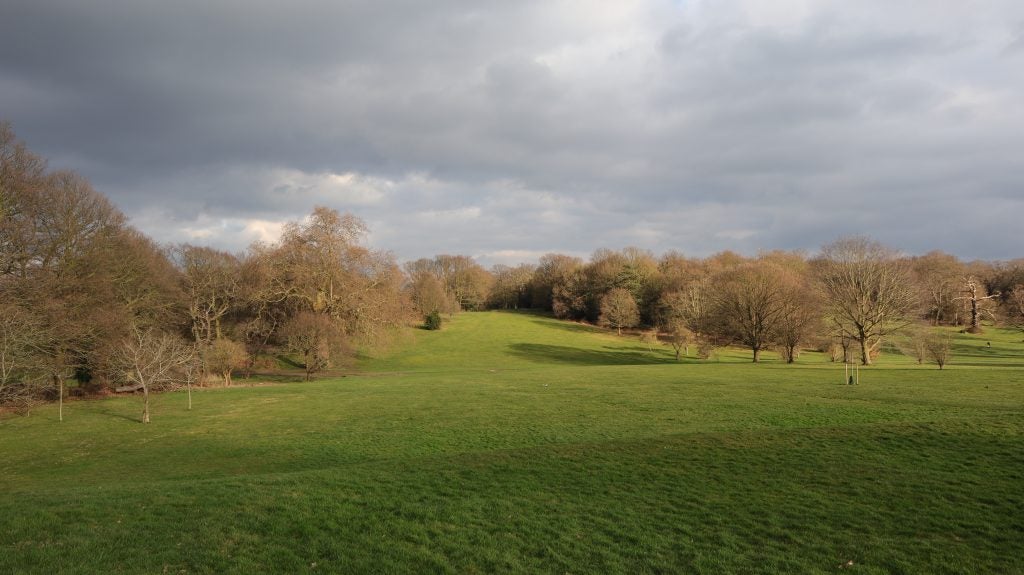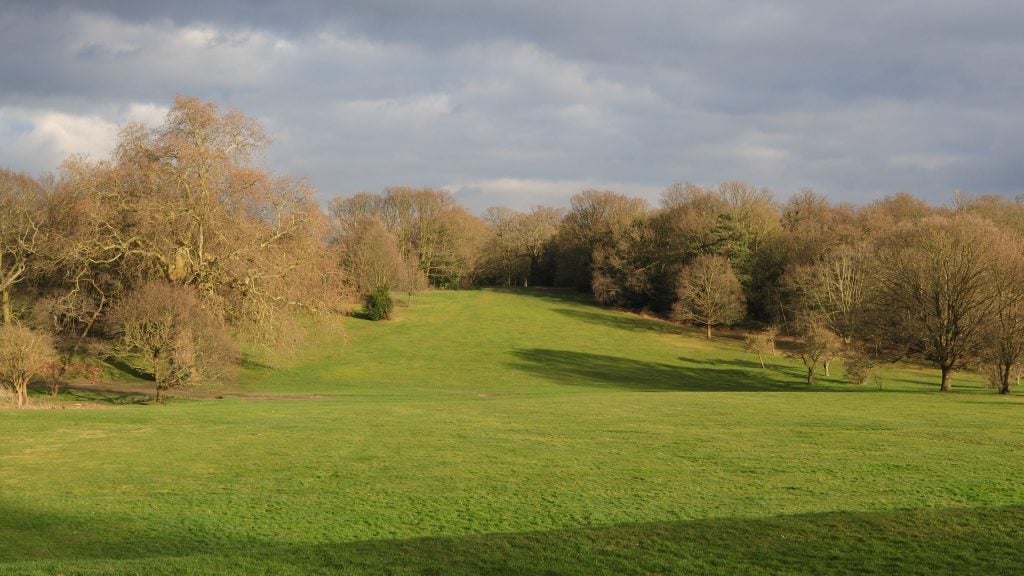Canon EOS M50 Review
Canon EOS M50 Review
A great option both for beginners and Canon DSLR die-hards
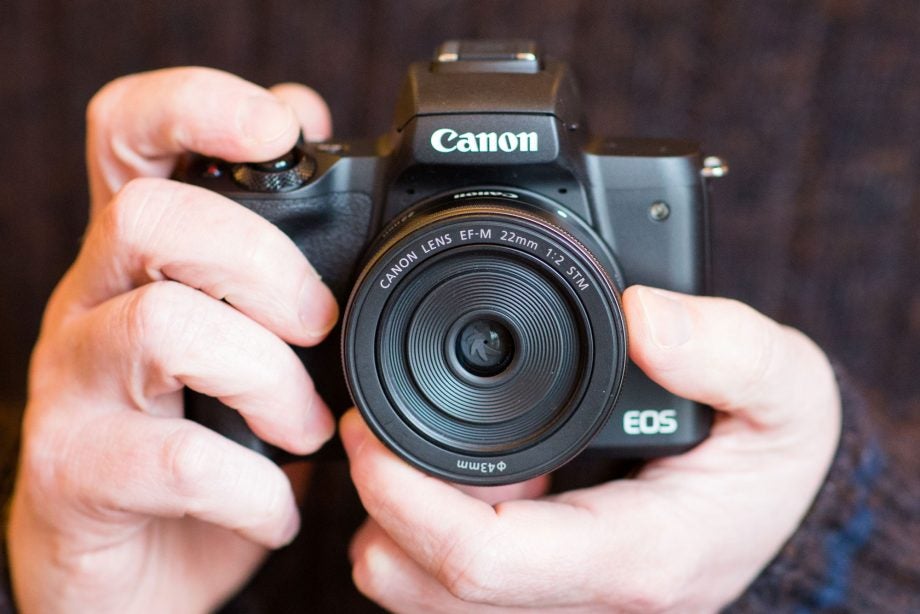
Verdict
Pros
- Compact size and light weight make it easy to carry everywhere
- Excellent image quality, with reliable metering and auto white balance
- Quick and accurate autofocus, even with adapted EF-mount DSLR lenses
- Easy-to-use interface that still gives extensive control over settings
- Fully articulated screen is great for shooting at unusual angles
Cons
- Single-dial control slower to use than twin-dial competitors
- Overly contrasty viewfinder blocks up shadow details
- Poorly implemented manual focus magnification
- Very small range of native EF-M lenses
- 4K video is subject to considerable restrictions
Key Specifications
- 24.1MP APS-C sensor
- ISO 100-51,200 (extended)
- 10fps continuous shooting
- 2.36m-dot electronic viewfinder
- 3in fully-articulated touchscreen
- 4K video recording
What is the Canon EOS M50?
Canon’s been making mirrorless cameras for almost six years, but until now it doesn’t seem to have been wholly convinced by the idea, shying away from making models that might compete directly with its own DSLRs. Now, though, we have the EOS M50, and perhaps things are starting to change.
Canon calls this a ‘premium entry-level’ model that slots into its range between the super-simple EOS M100 and the more advanced EOS M6. It features a 24.1-megapixel APS-C sensor, a built-in electronic viewfinder and fully articulated touchscreen. It’s available in black or white and costs £649.99 with the EF-M 15-45mm f/3.5-6.3 zoom, or £539.99 body-only.
The M50 uses a similar design to the firm’s ultra-compact EOS 200D DSLR, and crucially, comes to the market at a similar launch price. So for the first time, Canon is offering novice buyers a genuine choice between DSLR and mirrorless – although there are still only seven native EF-M mount lenses in Canon’s lineup.
However, while it may look like just another faux-DSLR, Canon has packed a surprising number of firsts inside the EOS M50’s unassuming body. Most notably, it marks the debut of the firm’s latest Digic 8 processor, making it the first Canon consumer camera capable of recording 4K video. This comes with serious caveats, but thankfully there’s a lot more for photographers to like about the EOS M50.
Related: Best mirrorless cameras
Canon EOS M50 – Features
The EOS M50 is built around a new generation of the Canon’s Dual Pixel CMOS AF sensor, which is now capable of phase-detection autofocus across a wider area of the frame. With 24.1MP resolution, it offers a sensitivity range of ISO 100-25,600 that’s expandable to ISO 51,200 if necessary. Canon says that the Digic 8 processor should produce better-looking JPEG files compared to previous generations.
Shutter speeds range from 30-1/4000sec, with an electronic first-curtain shutter employed to minimise any risk of vibration spoiling your shots. Canon has also included a silent shooting mode that uses a fully electronic shutter – the first time this has appeared on an EOS camera. Frustratingly, though, it’s only available from a fully automated mode that’s accessed from the SCN position on the exposure-mode dial. The electronic shutter can’t be selected in any other shooting mode, which feels like a missed opportunity.
Related: Best camera bags
Metering is handled by a 384-zone evaluative system, with spot, partial and average metering modes selectable to deal with tricky lighting situations. Continuous shooting is quick, thanks to the new processor: 10fps with focus fixed, or 7.4fps with focus adjusted between shots. This is very respectable at this price, and trounces the firm’s similarly-priced DSLRs. You can expect to shoot 10 raw frames in burst, or at least 33 JPEGs, before the camera slows down.
Canon has used much the same feature set as in its DSLRs, including its Auto Lighting Optimiser for balancing shadows and highlights in scenes with tricky lighting, and Highlight Tone Priority to avoid clipping of detail in the brightest areas of the image. There are subject-based scene modes for beginners, and creative filters such as Toy Camera or Grainy B&W. But you won’t find many other features that are widely available from other brands, such as an intervalometer or auto-stitching panorama mode.
Canon EOS M50 – Connectivity
In terms of connectivity, the EOS M50 features Wi-Fi, NFC and Bluetooth LE, with the latter capable of forming an always-on connection to your smartphone using the free Camera Connect app for Android or iOS. You get a choice of remote control options: either a basic Bluetooth release, or a Wi-Fi based version with live view and full control of the camera’s settings. You can see how these look in the left and middle screenshots below.
For sharing your photos, you can either push your favourite shots from your camera to your phone while browsing through the in playback, or view your images on your phone and pull them across. It’s also now possible to have all of your images copy automatically across to your phone for sharing on social media; a feature we’re increasingly seeing added across all brands.
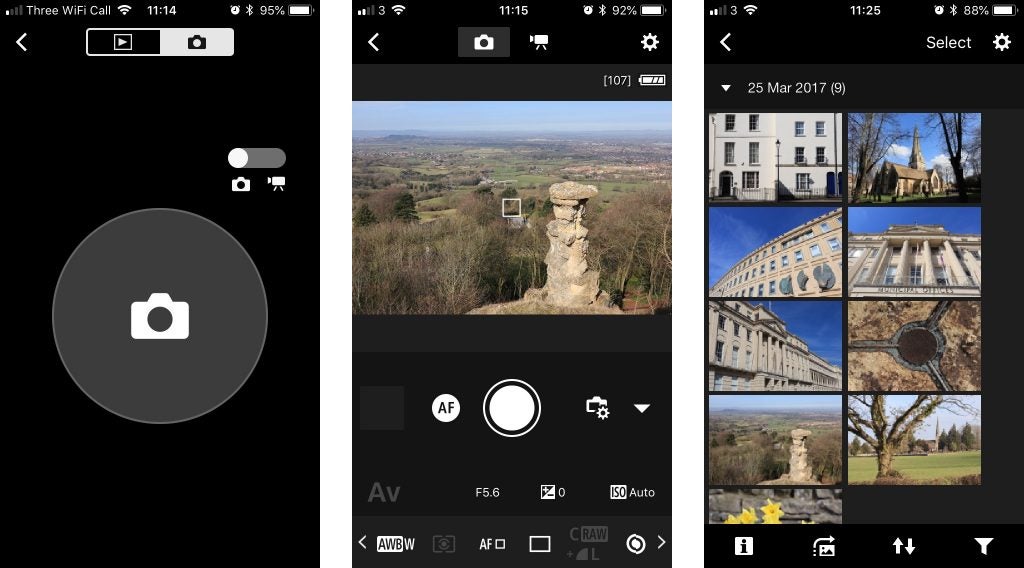
In addition, the EOS M50 can sync files automatically to PC or Mac computers that have Canon Image Transfer Utility 2 installed, and not just JPEGs, but raw files and videos too. This is a great idea that I suspect many enthusiast photographers might find more useful than clogging up valuable storage space on their smartphones. Unfortunately though I found it only worked intermittently with my Windows 10 laptop, and was considerably slower than simply using a card reader.
Canon has also included some other Wi-Fi features that you don’t necessarily see on other brands. For example it’s possible to control the camera remotely from a computer, again with full control of settings and a live view display. You can also print your images directly to a Wi-Fi-enabled printer.
Incidentally, the EOS M50 isn’t compatible with Canon’s older wired or infrared remote releases, which in effect are made redundant by the ability to use your smartphone instead. It can be used with Canon’s optional £40 BR-E1 Bluetooth remote, but this doesn’t add anything extra that you can’t do for free using your phone.
Canon EOS M50 – Build and handling
As expected at this price point, the EOS M50 is constructed with a polycarbonate rather than metal body shell, but it still feels robust enough in your hand. Canon is better than most of its rivals at making small cameras that handle well, and has included a relatively large grip with well-defined ‘hooks’ for your second finger and thumb. As a result, the M50 feels surprisingly secure, even when used one-handed.
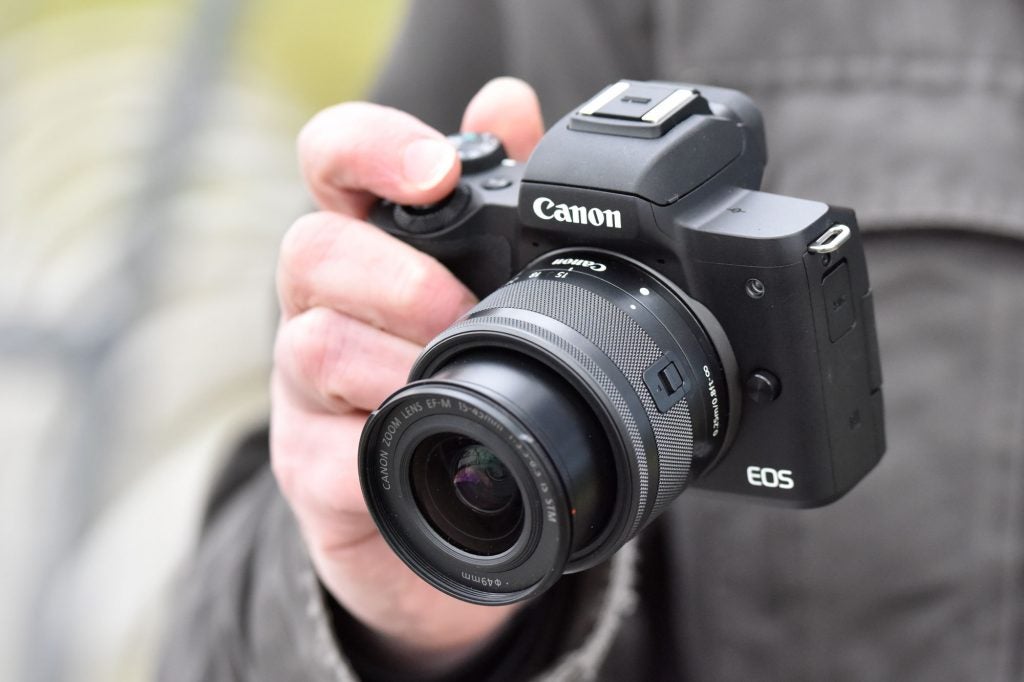
The controls are well laid-out, with the buttons being of a decent size and easy to locate by touch when you’re using the viewfinder. Of course this is still a very small camera, and users with larger hands may well find everything is a bit too cramped. But as entry-level models go, the EOS M50 is unusually pleasant to use. Naturally though, it doesn’t handle as well as the higher-end EOS M5, and nor does it have the tactile retro charisma of its closest competitor: the Olympus OM-D E-M10 Mark III.
In terms of operation, the EOS M50 uses a single electronic dial for changing exposure settings, coupled with a small set of buttons giving direct access to key functions. This is a formula Canon has used successfully for decades on its entry-level SLRs, so it’s no surprise to see it again here. However, it feels rather complacent with the likes of Fujifilm, Olympus and Panasonic all offering twin-dial mirrorless cameras at this level, which are invariably nicer to use.
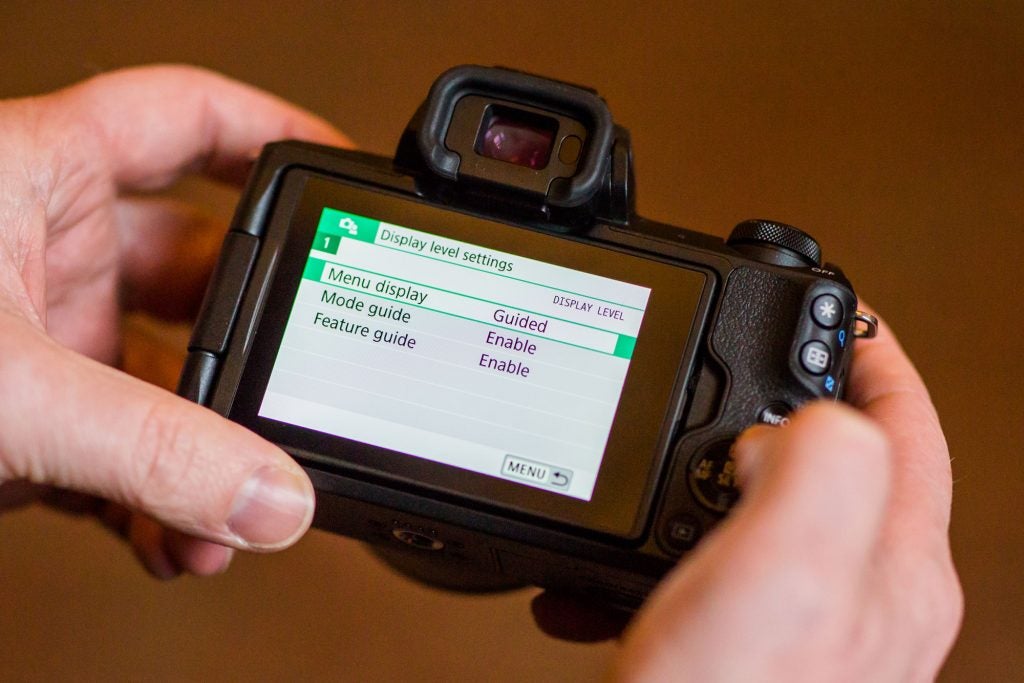
Even so, the EOS M5 works pretty well straight out of the box. Canon has paid great attention to making it approachable for novice photographers, with a guided user interface that briefly explains what the various exposure modes, functions and menu settings do. Canon’s Auto+ mode also goes well beyond offering basic programmed exposure: it gives new users a results-oriented way of adjusting settings, with sliders to lighten or darken the image, blur the background and so on. This all works much better on the mirrorless EOS M50 than it ever could on a DSLR, as the electronic viewfinder previews all the changes in real time.
More-experienced users can simply ignore all this, and use the camera just like Canon’s DSLRs. Despite its single-dial interface the EOS M50 still works well, with the key exposure settings all relatively easy to change with the camera up to your eye. Pressing the ‘up’ button on the d-pad cycles through changing the shutter speed, aperture and exposure compensation, depending on the exposure mode, while the top-plate M-Fn button controls the ISO. Other buttons on the d-pad set the flash mode and toggle between autofocus and manual, while one on the camera’s shoulder activates focus area selection.
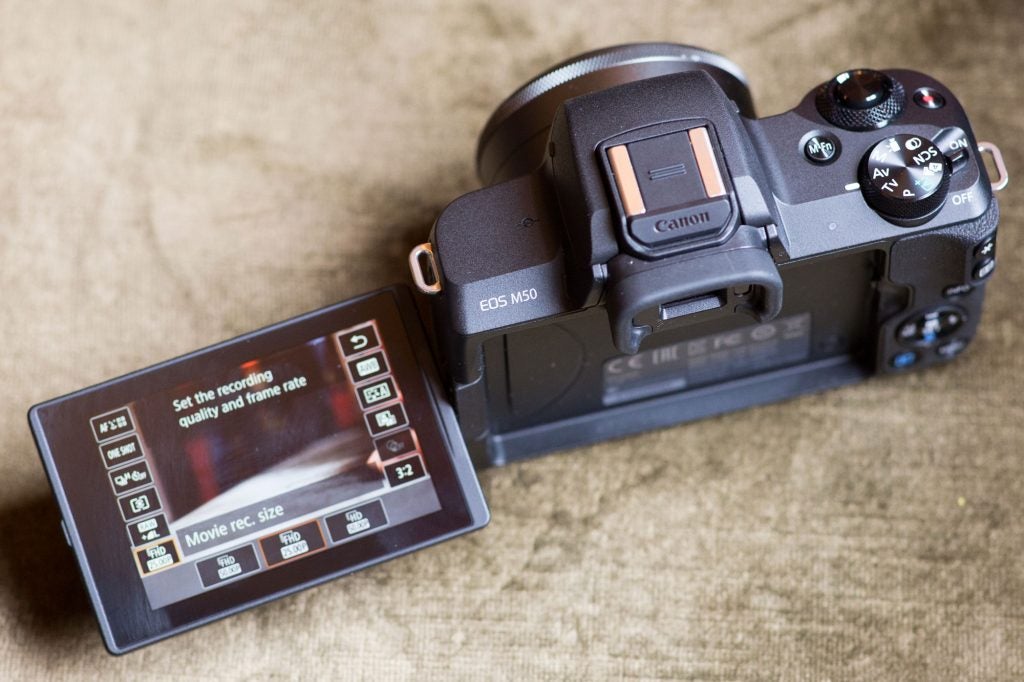
Everything else is set using Canon’s onscreen quick menu, with a press of the Q button giving easy access to the other key functions. While it’s possible to change all these using the d-pad, it’s much quicker to use the touchscreen. Indeed Canon’s touch interface is one of the best in the business, and unlike many other brands you can use it to change menu settings, as well as browse through images in playback.
When using the viewfinder, Canon’s touch-and-drag AF is available for moving the focus point around the frame. Many cameras now allow this, but not all work very well. However, Canon lets you set the focus point selection to ‘relative’ rather than absolute, which means that inadvertent contact between your nose and the screen won’t reset the AF point. You can also limit the area of the screen used: either full screen, left or right halves, or any of the quarters. As a result, I’ve found that touchpad AF works much better than on most other cameras. Naturally you can also select the focus point by touch when shooting with the LCD.
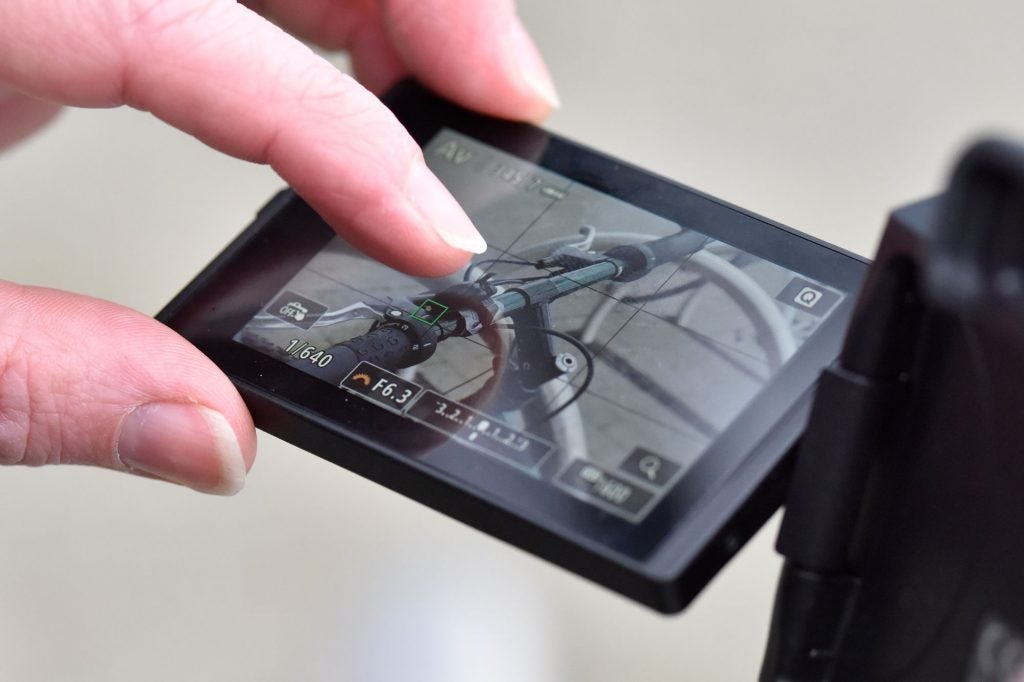
Canon has also provided plenty of flexibility for customising the controls to suit your own needs. For example, you can set up ‘back-button focusing’, with autofocus initiated by the AEL control on the camera’s shoulder rather than the shutter release. In addition, six other buttons – M.Fn and video record on the top-plate, and the four buttons of the d-pad – can each be reassigned to any of 20 other functions.
I set the ‘down’ key to toggle focus peaking on and off, and the record button to activate depth-of-field preview. The latter means you can’t record video unless the mode dial is set to the movie position, but as far as I’m concerned, that’s not a problem.
Canon EOS M50 – Viewfinder and screen
The crucial difference between the EOS M50 and Canon’s entry-level SLRs is that it uses an electronic, rather than optical viewfinder. This brings a number of advantages: not only is the viewfinder larger, it also gives an accurate preview of the picture you’re going to get in terms of colour and brightness.
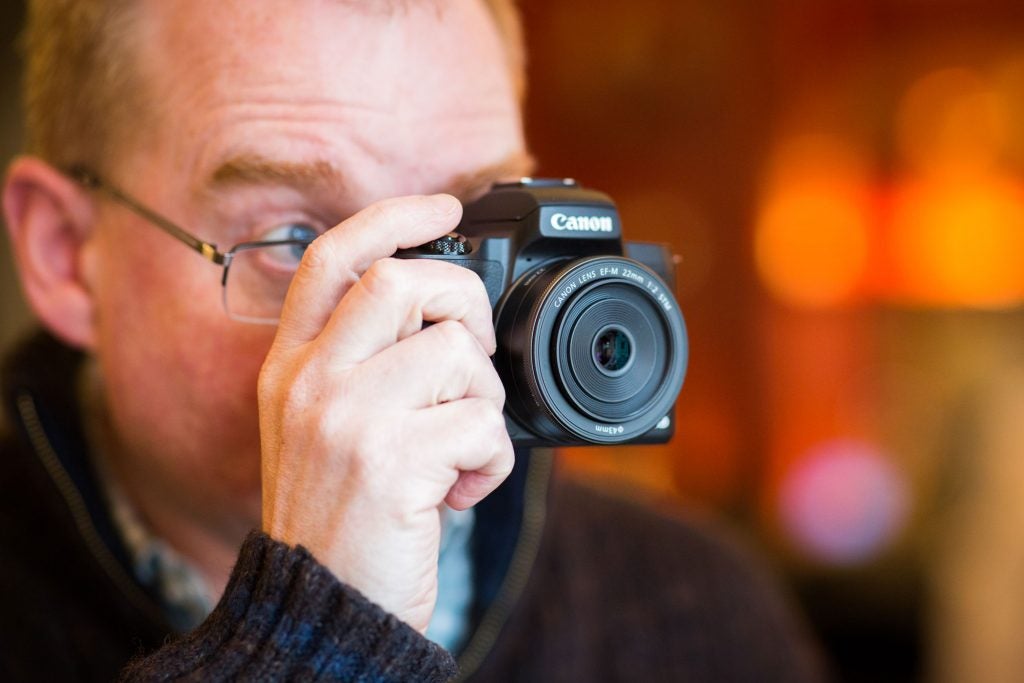
You can overlay lots of useful information such as gridlines, an electronic level, and a live histogram, including Canon’s unique RGB version. Unlike any DSLR, the M50 can seamlessly switch between eye-level and LCD shooting, without any difference in behaviour or functionality, using the eye sensor beside the EVF. This sensor isn’t overly-sensitive, so it doesn’t continually switch the LCD off when you’re trying to shoot at waist level.
The viewfinder itself is the same as that used in other recent Canon models, being a 2.36-million dot, 0.39-type OLED unit with a magnification of around 0.62x. I have to say I prefer its central, SLR-like position compared to the corner-mounted EVFs on some of its competitors. Colour and exposure preview are both pretty reliable, but the display is too high in contrast, which makes it difficult to see details in the darker areas. Unfortunately this can’t be adjusted; it’s only possible to change the brightness.

Beneath the EVF is a 3in 1.04m-dot LCD, with a fully-articulated design. It can tilt upwards or downwards for waist-level or overhead shooting in either portrait or landscape format, face fully forwards for selfies, or even fold away with the screen facing inwards to protect it from scratches. This flexibility makes it a great complement to the EVF when you want to shoot at unusual angles. In a welcome improvement over the EOS M5, its colour calibration closely matches that of the EVF.
Canon EOS M50 – Autofocus
Canon’s Dual Pixel CMOS sensor means every sensor pixel is capable of being used for phase detection, allowing fast autofocus almost wherever the subject is situated within the frame. The EOS M50 can employ a maximum of 143 focus points laid out in a 13 x 11 grid, but with some lenses this is reduced to a smaller 99-point array, in an 11 x 9 arrangement that excludes the frame edges. The AF system is sensitive down to -2 EV, which means the camera will continue to focus in extremely low light.
One new feature enabled by the Digic 8 processor is eye-detection AF. This is activated when face detection is turned on, to focus specifically on your subject’s eye. It works pretty well, displaying a square around the selected eye and following it accurately as your subject moves. But it’s only available in single-AF mode, which means you can’t use it track focus during burst shooting.
Using the 15-45mm kit lens with its STM focus motor, autofocus is as good as you could hope for: super-fast, silent and accurate. However the EOS M50 also works remarkably well with EF-mount DSLR lenses using the Canon EF EOS M mount adapter, again giving quick and accurate focusing. One noticeable improvement over the EOS M5 is that it continues to work in rather lower light.
Continuous focus also works well, thanks to the ability to use phase-detection anywhere in the frame. I was even able to get some decent shots of herons flying towards the camera using my 12-year-old EF 70-300mm f/4-5.6 IS USM, which is pretty impressive given that this lens uses a rather sluggish micro-USM motor. The camera appeared to drop the frame-rate to ensure the lens had time to refocus, rather then shoot on regardless, which is exactly what it should do.
If you need to focus manually, a range of aids is included. A peaking display can be enabled in a choice of two strengths and three colours (red, yellow or blue), and be quickly toggled on and off when assigned to a function button.
Magnified view is also available, however unlike most cameras it’s not activated by turning the focusing ring; instead you have to press the focus area selection button then spin the main dial. Once you’ve focused, the magnified view can’t be dismissed by tapping the shutter release, either; instead you have to press either the AF area or Set buttons. This is all just a bit too long-winded, although it does mean operation stays consistent between native EF-M and adapted EF lenses.
It’s also possible to enable manual focus adjustment when the shutter button is held half-pressed after autofocus is achieved, and curiously this does automatically bring up a magnified view when you rotate the focus ring. But there’s no way of getting out of magnified view to see your full composition, without releasing the shutter button. At this point the camera will autofocus again, which completely negates the point.
Canon EOS M50 – CR3 raw
One intriguing new feature of the EOS M50 is its CR3 raw format. This is capable of storing 14-bit data with the same image quality and in a similar file size to the existing CR2 format (which means it presumably uses the same lossless compression). But it adds a space-saving full-resolution C-RAW option that promises considerably reduced file sizes. At low ISOs I found C-RAWs to be typically 30-35% smaller than conventional raw files, depending in the scene.
As with the standard raws, C-RAW can be re-processed in-camera after shooting to correct any settings errors, or impart a different look to your shots. Naturally you can also make all the same adjustments when processing on a computer too, such as white balance, brightness, highlights and shadows, and colour profiles. They’re recognised seamlessly by both Canon’s own Digital Photo Pro, and the latest versions of Adobe Camera Raw and Lightroom.

These conversions have large brightness and shadows adjustments applied in Adobe Camera Raw, but there’s no visible difference between RAW and C-RAW versions
I decided to shoot C-RAW as a matter of course when testing the camera, to see whether it had any visible impact on image quality when post-processing. Even when making some fairly significant brightness and shadow adjustments, I found there was no apparent penalty in shadow noise or tonality in the highlights. It’s possible that with really extreme adjustments some problems might emerge, but I couldn’t find any obvious reason not to C-RAW as a matter of course.
Canon EOS M50 – 4K Video
One much-touted feature of the EOS M50 is that it’s Canon’s first consumer camera to record 4K video, thanks to the Digic 8 processor. Unfortunately, its implementation leaves something to be desired. The first caveat is that 4K is recorded using a 3840 x 2160 pixel region at the centre of the sensor, bringing a considerable field of view crop of 1.6x, or as much as 2x if you turn on the electronic stabilisation. This makes all your lenses look longer; for instance the 15-45mm kit zoom becomes a 38-115mm equivalent. You can see this progressively tighter crop in the series of images below.
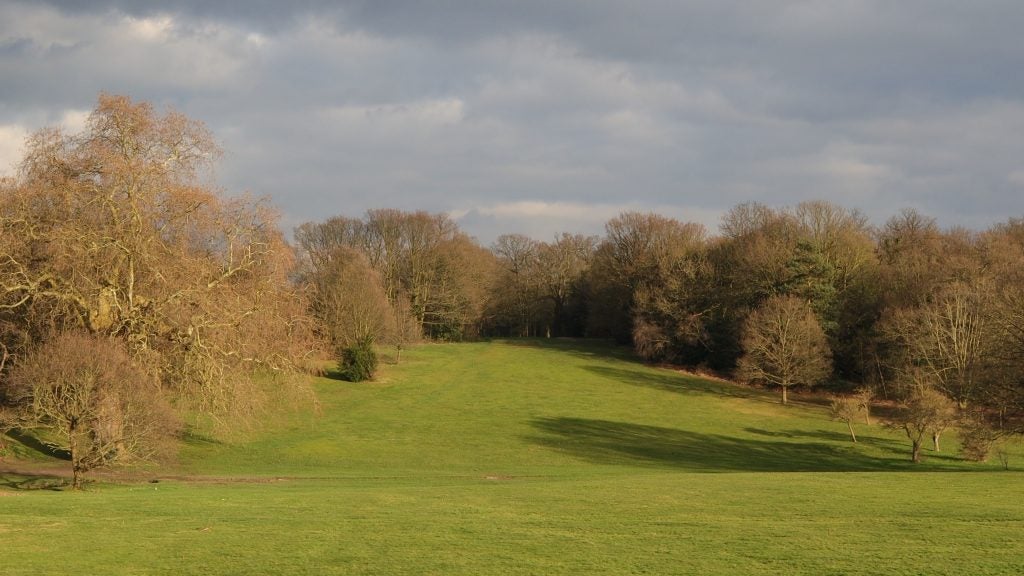
Still frame from 4K video with Digital IS set to Enhanced (2x crop)
Secondly, the camera can’t use Canon’s excellent Dual Pixel AF for 4K recording. This is a shame as the DPAF does a fantastic job of keeping moving subjects in sharp focus while recording in Full HD. In 4K, the contrast-detection autofocus is reasonably competent, but loses focus on the subject far more easily and then takes longer to regain it. So while 4K gives visibly more detailed footage, the camera simply works much better in Full HD.
Indeed at this lower resolution, the EOS M50 proves to be an excellent performer. It gives good-looking output with the same attractive colour and well-judged exposure as for stills shooting. It’s possible to change exposure settings, or pull focus from one subject to another, using the touchscreen while recording, so no operational noises spoil your soundtrack.
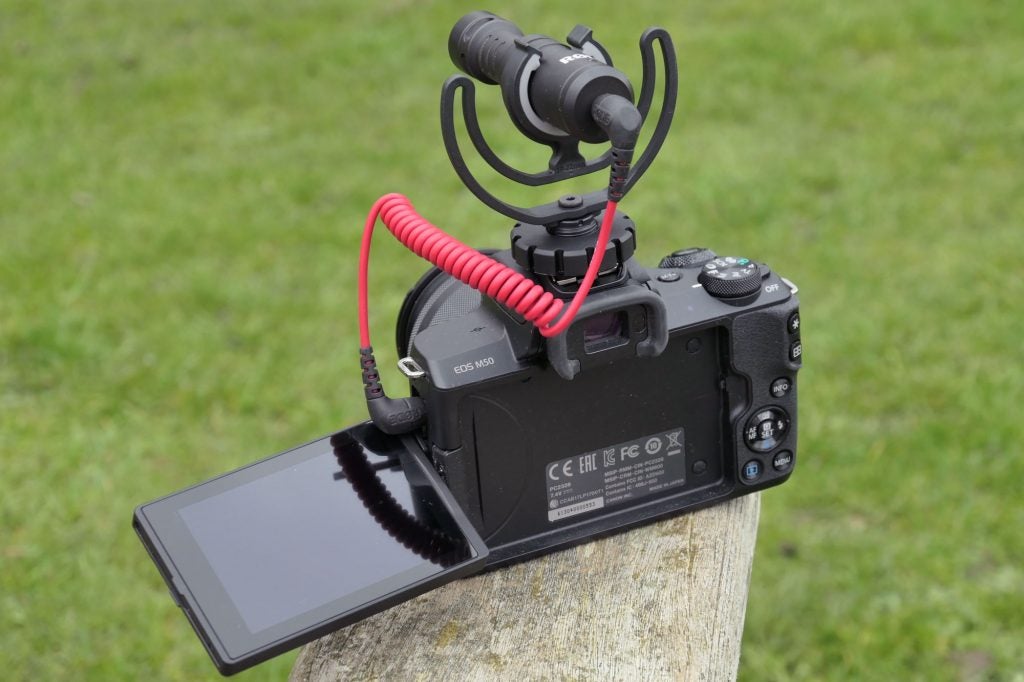
Unusually at this price, you even get a built-in 3.5mm stereo microphone socket for recording better quality sound. Plugging-in a microphone partially obstructs rotation of the screen, but I didn’t find this to be much of a problem in practice, as you can still set the LCD to a comfortable position for video shooting.
In fact, the combination of the Dual Pixel CMOS AF, microphone socket, fully articulated touchscreen and Wi-Fi remote control capability makes the EOS M50 look like an excellent choice for vloggers, as long as they’re happy to shoot in Full HD.
Canon EOS M50 – Performance
While Canon’s earliest mirrorless models gained a reputation for being sluggish, those days are long gone. Instead the EOS M50 is a well-behaved, responsive camera that powers up quickly and reacts instantly to button presses and the touchscreen alike. The 10-frame buffer can fill up in a second of continuous shooting, but the camera doesn’t take too long to clear images from the buffer to the card and let you fire off a couple more. However I’d recommend turning off the Image Review setting, as this hinders firing off a second frame in quick succession in single-frame drive mode.
The camera is pretty quiet too, especially if you use one of Canon’s native EF-M lenses with their essentially silent autofocus. If you also turn off the operational beeps, you’re then just left with the shutter sound. It’s not the most refined you’ll ever hear, and noticeably louder than some of the latest super-quiet mirrorless models, but it’s not excessively intrusive either.
In general the camera’s automated systems work pretty well. The metering is usually close to the mark, and it’s easy to judge in the viewfinder when you might want to darken or lighten your image and apply the requisite exposure compensation before shooting, aided by the live histogram display. Auto white balance works very well indeed, and you get Canon’s signature attractive colour rendition.
Auto Lighting Optimiser does a great job of evening out the shadows and highlights without looking artificial. As a result, the EOS M50 delivers excellent JPEGs directly out of the camera. I’d recommend using the Fine Detail picture style, which, as its name suggests, uses more refined sharpening than the Standard setting to deliver better pixel-level detail.
High-ISO image quality is very impressive too, and I was pleased with the camera’s ability to render colourful, attractive images at sensitivities as high as ISO 10,000. Obviously you can’t expect lots of fine detail at this point, but the resultant images are more than good enough for small prints or sharing on social media.
Canon EOS M50 – Image quality
With the EOS M50, Canon has introduced a new generation of hardware, in the shape of its latest 24.1MP Dual Pixel CMOS sensor and Digic 8 processor. Interestingly it appears that the camera’s optical low-pass filter is very weak indeed, if indeed it even has one at all.
Canon also appears to have refined its approach to high ISO noise reduction, employing less-aggressive luminance NR in a bid to retain more fine detail. As a result, images maintain good detail at relatively high ISO settings.
Resolution
Examining our resolution chart tests, processed from raw using Adobe Camera Raw at default settings, we can see that the EOS M50 resolves around 3600 lines per pictures height at ISO 100. Tell-tale maze-like aliasing visible at higher frequencies suggests that Canon may have omitted an optical low-pass filter. This figure barely decreases at ISO 800, and even at ISO 6400 we can still measure an impressive 3300 l/ph. At higher settings, however, resolution deteriorates quickly to around 2200 l/ph at ISO 25600, before plummeting to 1200 l/ph at the extended ISO 51,200 setting.
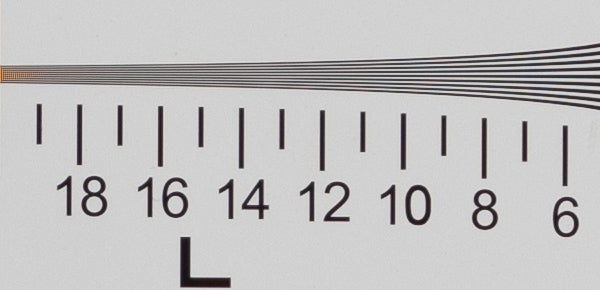
ISO 100, Raw + Adobe Camera Raw (default settings)
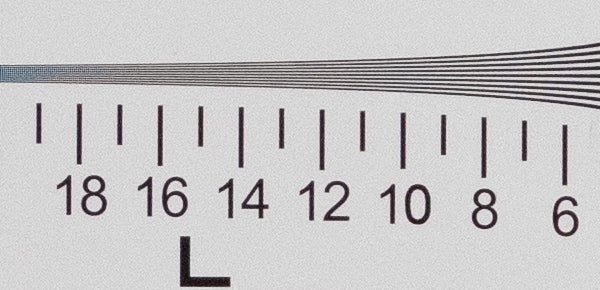
ISO 1600, Raw + Adobe Camera Raw (default settings)
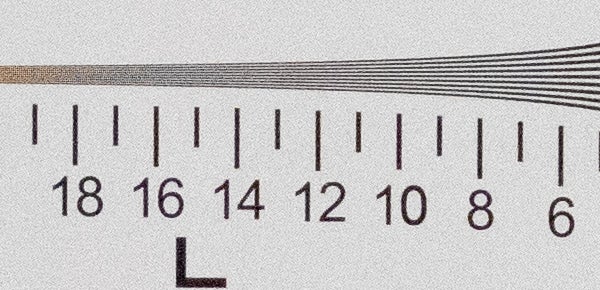
ISO 6400, Raw + Adobe Camera Raw (default settings)
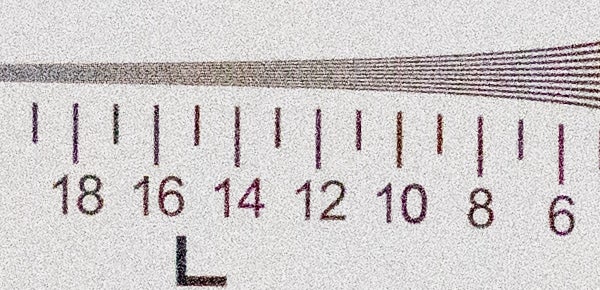
ISO 24600, Raw + Adobe Camera Raw (default settings)
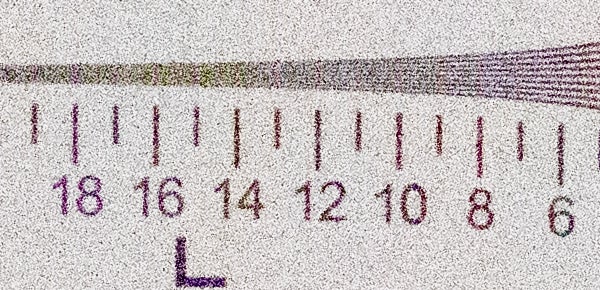
ISO 51200, Raw + Adobe Camera Raw (default settings)
Noise
Our test scene shots exhibit particularly crisp fine detail at low ISO settings, reinforcing the idea that Canon has used a very weak optical low-pass filter. Image quality stands up very well at ISO 800 too, with only the finest detail being lost. It’s only at ISO 3200 that noise and noise reduction starts to blur away detail more obviously, but colour is retained extremely well. ISO 12,800 is perfectly usable for smaller reproduction sizes, but realistically is about as high as you’d want to go. By ISO 25,600 both colour and detail have deteriorated dramatically, while ISO 51200 is very broad-brush indeed.
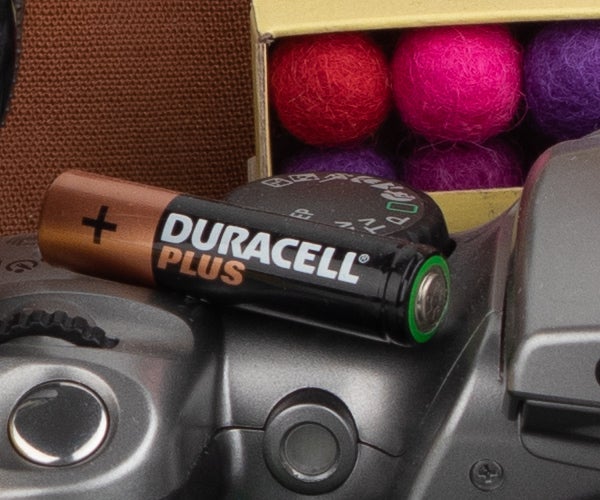
ISO 100, Raw + Adobe Camera Raw (default settings)

ISO 800, Raw + Adobe Camera Raw (default settings)
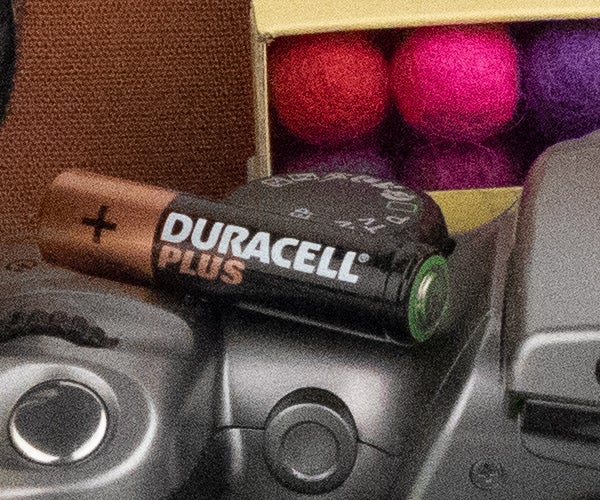
ISO 3200, Raw + Adobe Camera Raw (default settings)

ISO 12800, Raw + Adobe Camera Raw (default settings)

ISO 25600, Raw + Adobe Camera Raw (default settings)

ISO 51200, Raw + Adobe Camera Raw (default settings)
Why buy the Canon EOS M50?
It’s taken a while, but Canon finally seems to be taking mirrorless seriously. With the EOS M50, it’s delivered a very likable little camera that manages to be simple and approachable for beginners, while also offering a full degree of manual control for enthusiasts. Its excellent touchscreen interface and connectivity will also appeal to those who’ve previously only taken pictures with a smartphone.
Crucially, it comes to the market at a very realistic price. Alongside the Olympus OM-D E-M10 Mark III, it’s one of the best options around for novices looking to buy their first ‘proper’ camera.
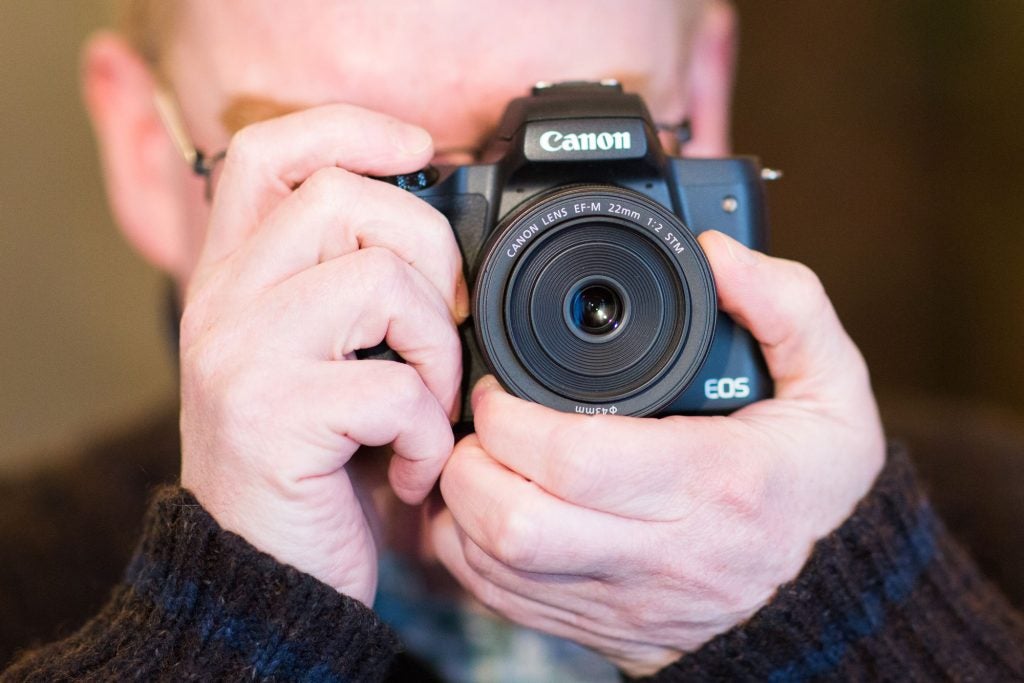
However this isn’t the limit of the EOS M50’s appeal; it could also tempt existing Canon DSLR owners looking for a small, lightweight alternative that will work with their existing lenses. Indeed compared to Canon’s entry-level DSLRs, in many respects it’s a better camera. It’s smaller and lighter, shoots faster, has a larger viewfinder and vastly more sophisticated autofocus, and can switch seamlessly between eye-level and LCD shooting. Its main drawback is its shorter battery life (it’s definitely worth turning on the Eco mode).
You shouldn’t buy the EOS M50 for its much-touted ability to record 4K video, however, as lots of other cameras do this better. But it’s a great choice for recording in Full HD, with more accomplished autofocus than any of its similarly priced peers.
Perhaps the EOS M50’s biggest drawback is nothing to do with the camera itself, but instead Canon’s short-sightedness in failing to build up a comprehensive EF-M lens range. The basics are covered, but the lineup is conspicuously short of the fast primes and high-quality zooms favoured by enthusiasts. It’s possible to use adapted DSLR lenses, but it doesn’t really make sense to plan on building up a system this way from scratch. Hopefully Canon will get its act together and make some more-interesting EF-M lenses, sooner rather than later.
Related: Best cameras
Verdict
In many ways the EOS M50 is the best entry-level EOS Canon has yet made. It’s a great option both for beginners and for Canon DSLR owners tempted by the advantages of mirrorless.
Trusted Score
Features
| Megapixels (Megapixel) | 24.1MP |
| Image Sensor | 24.1MP APS-C Dual-Pixel CMOS |
| Shutter speed | 30-1/4000sec + bulb |
| Auto focus | 143-point dual-pixel AF |
| Max output resolution | 6000 x 4000 |
| Exposure control | PASM, Movie, Creative Filter, Scene, Intelligent Auto, Hybrid Auto |
| Exposure metering | Evaluative, Partial, Spot, Average |
| Exposure compensation | +/- 3EV in 0.3EV steps |
| ISO settings | ISO 100-25,600 (standard), 100-51,200 (extended) |
| LCD Monitor | 3in, 1.04m-dot fully-articulated touchscreen |
| Viewfinder | 2.36m-dot OLED EVF, approx. 0.62x |
| Drive modes | 10fps; 7.4fps with AF |
| Video (max res/format) | 4K 3840 x 2160, 25fps |
| Memory card slot | SD, SDHC, SDXC (UHS-I) |
| Batteries supplied | LP-E12 Li-ion battery |
Physical Specifications
| Dimensions Width (Millimeter) | 116.3 |
| Depth (Millimeter) | 88.1 |
| Length (Millimeter) | 58.7 |
| Weight (body only) (Kilogram) | 387g |

